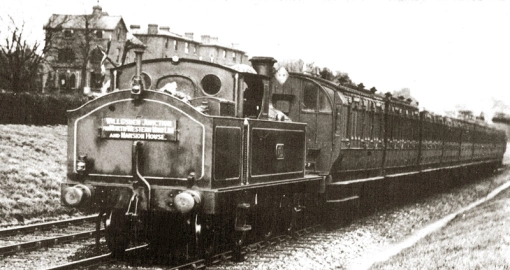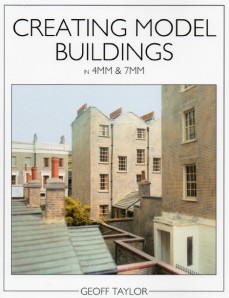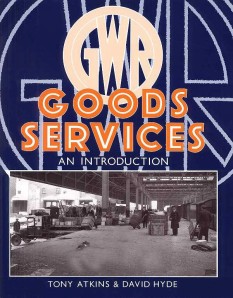December 2010
Monthly Archive
December 31, 2010

Brown Trains. Nothing to do with the standard of service!
In 1890 – 1891 the London & North Western Railway built ten new trains of eight 4-wheel carriages in two batches of five for its Broad Street to Mansion House services. These eighty 28′ coaches were built as renewals of much older stock which had been used on the line since 1872, and in 1897 ten new Thirds with a 1′ shorter wheelbase were built on the capital account to strengthen the trains.
As built, the Mansion House sets were formed from Diagram 120 Firsts, Diagram 300 Seconds, Diagram 300 Thirds, Diagram 395 Brake Seconds and Diagram 395 Brake Thirds, and I intend to build Set No.7 in the pre-1897 eight carriage format. The photograph above shows Set No.7 c1904 with the additional Third.
The formation and running numbers of Set No.7 are all known:
Brake Second #96, Second #187, Second #165, First #266, First #118, Third #439, Third #825, Brake Third #272. These carriages were all gas lit and built on 18′ 0″ wheelbase steel channel underframes. In 1897, Third #2236 was added to the set and marshalled next to Brake Third #272.
Both the Brake Thirds and Brake Seconds had three compartments, and throughout the train there were only two compartment sizes; 6′ 10″ wide for Firsts, and 5′ 5″ for inferior classes. this explains the duplicate Diagram numbers for the Brake Seconds & Brake Thirds and the duplicate Diagram numbers for the Second & Third class carriages – to all intents and purposes they were identical, with the exception that in the all-Thirds, the compartment partitions were only to shoulder height.
These carriages were not painted in the famous L&NWR plum & spilt milk livery, but instead finished in varnished Burma teak which was considered by the company a better finish than paint to resist the continuous sulphurous atmosphere of the sub-surface lines. The stock was unlined and class designations were in the form of a large gilt numeral on the lower panel of the doors. The appearance of these sets soon earned them the soubriquet ‘The Brown Trains’.
16′ long roof boards were carried by the carriages, a little narrower than the 8″ wide roof boards carried by main line stock, and these carried the legend:
BROAD STREET, WILLESDEN, KENSINGTON & MANSION HOUSE. CHANGE AT WILLESDEN FOR MAIN LINE.
Trains destined for Bishospgate carried these boards on the 1st, 3rd, 5th & 7th carriages in the sets whereas the 2nd, 4th, 6th & 8th carriages carried boards lettered:
MANSION HOUSE, WAPPING, BASILICA FIELDS & BISHOPSGATE for BROAD STREET.
All the carriages had small 3′ boards on the sides above the windows lettered LONDON & NORTH WESTERN TRAIN in black on white.
The sets were gas lit as built, but in 1902 were converted to Stone’s electric lighting, each carriage was then fitted with dynamos and twin cell boxes. The lower footboards under the guard’s doors were removed at the same time as the conversions, but steam heating was never fitted.
With the electrification of the District Line in 1905, the majority of trains were hauled by the District Railway’s electric locomotives, with the exception of those few continuing on to the Extended Circle and Bishopsgate via Basilica Fields, until cessation of service in 1908.
At this time there are no kits for the Brown trains available commercially in 7mm. London Road Models have brass kits in 4mm, but I’m seriously considering producing artwork for etching as an aid to building them.
December 26, 2010
Posted by Adrian under
Media
[3] Comments
As usual at this time of year, I deflected potentially unwanted presents of socks, smellies and chocolates (as a 7mm modeller shouldn’t that be pipes, slippers and cardigans?) by drawing up a list of books and distributing it to my nearest and dearest.
 Among the gems chosen by relatives who have long been in the know that I like nothing better than to sit in the comfy leather wing-back with a good book and a glass of red, appeared Geoff Taylor’s treatise on creating model buildings.
Among the gems chosen by relatives who have long been in the know that I like nothing better than to sit in the comfy leather wing-back with a good book and a glass of red, appeared Geoff Taylor’s treatise on creating model buildings.
I’ve read most all of Geoff’s articles in the MRJ and BRM, and have long been an admirer of his work, and he’s also got a fab website which shows off his immense skill to perfection, so did I really need this book? Of course! Wild Swan books are always gorgeous in their execution and this is no exception. So far I’ve only flipped through for a quick scan of the photos, and I’ve skimmed the first chapter, but with the enormous quantity of brickwork to be modelled on Basilica Fields, I can foresee that it will end up as dog-eared as my copy of Martyn Welch’s treatise on the art of weathering.
 Of all the books received, only one other has any direct relevance to Basilica Fields, and it’s another Wild Swan offering, though some ten years since first published – Great Western Goods Services: An Introduction by Atkins and Hyde. I’ve had Part 2A for some time and found it very useful piecing together some of the GW’s services to and around Smithfield via the Metropolitan.
Of all the books received, only one other has any direct relevance to Basilica Fields, and it’s another Wild Swan offering, though some ten years since first published – Great Western Goods Services: An Introduction by Atkins and Hyde. I’ve had Part 2A for some time and found it very useful piecing together some of the GW’s services to and around Smithfield via the Metropolitan.
Although I’ve not yet had time to do more than flick through this one, much of what I’ve seen appears to deal with the background to, and is an analysis of the company’s goods services, and there is a chapter on the RCH as well as a précis of the goods districts, including London, which is expounded upon in Part 2A.
I’m very much looking forward to Part 3 which promises to delve into the workings of the GW dockyards.
December 19, 2010

In 1863 Craven introduced suburban carriages to the LB&SC, but instead of being new builds, these were a mixed bag of simple conversions from his main line stock with modified seating and the arm rests removed, increasing the capacity of compartments from six to eight.
It wasn’t until Stroudley took office that new suburban stock began to appear. As his standardisation policy extended to rolling stock, his lightweight suburban 4-wheelers appeared in 1872 and continued in production for twenty nine years.
These new carriages were all constructed mahogany with teak framing, and were 26′ long by 8′ wide on a standard underframe made from Moulmein teak, and nine types were introduced:
- A four-compartment first.
- A five compartment second with a four compartment second appearing later.
- Two thirds; early versions having long side windows with no partitions to the compartments and later versions with full partitions and separate quarterlights.
- Two brake-thirds, the passenger compartments as above.
- Two four-compartment first/second composites with unequal compartment lengths, later batches having equal length compartments for both classes.
These suburban carriages were close-coupled in semi-permanent sets by a central buffing fixture with side chains, and standard buffers were only fitted to the brake end of brake-thirds. Initially train braking was hand operated by the guard, with wooden blocks bearing on the wheels of the brake-third carriages only. In 1875, Stroudley puruaded the Board to release funds to convert to the automatic Westinghouse brake, thus becoming one of the earliest proponents of the system, long before automatic train braking became law.
The carriages were originally built with oil lamps, but many were converted to gas. Although Stroudley was innovative and introduced the first electrically lit train in 1881, I’ve found no evidence to suggest any of his suburban stock was so converted.
Externally the carriages were varnished and gilt-lined under both Stroudley and Billinton, but once the mahogany had deteriorated to the point that further revarnishing ceased to give a satisfactory finish, they were painted in a mahogany colour. During 1903 a new livery was unveiled, cream with umber from the waist down. Just how quickly this new livery took to percolate down to the humble suburban carriages I’m not sure, but I suspect it was at least three years, possibly longer, and I welcome informed discussion on this. Roofs were white and the ends of brake-thirds vermilion.
Internal colour schemes remained fairly constant through both the Stroudley and Billinton periods, though I’d also welcome debate on just how much of the refinery seen on the main line stock was incorporated in the suburban sets.
- First class – blue colour scheme, plush cushions with blue buffalo hide in smoking compartments. Paintwork, carpets and blinds also in blue.
- Second class – brown colour scheme.
- Third class – bare wooden seats, oak grained paintwork.
For Basilica Fields I’m fortunate that Roxey Mouldings can supply all the necessary kits to build a contemporary rake. Speaking of which, attempting to discover what might constitute a typical East London Railway set proved to be an interesting diversion, however Cheam’s accident on the ELR in 1897 generated a Board of Trade report which lists the six carriages of the train the loco was pulling, so I’m confident that building a rake consisting of a brake-third, third, first, second, third and brake-third will satisfy the historic demand.
Withdrawal of the earliest of Stroudley’s carriages commenced at the turn of the 20th century, and most, but not all had gone by Grouping.
December 19, 2010
Posted by Adrian under
Admin
1 Comment
…have been thin on the ground of late as I’ve been away from home and sans internet for much of the time. Nevertheless I’ve had some opportunities to scribble several draft posts by hand and should get some up over the Christmas break. Analogue technology! Posts may be thin on the ground for a few weeks after the holiday, but back to a reasonable frequency not too far into the New Year. Of course all this has meant that no progress has been made on the layout – at least not by me. However, I have taken up the offer for a helping hand in a couple of areas, and will hopefully be able to bring you some news and updates of those practical exploits soon.



